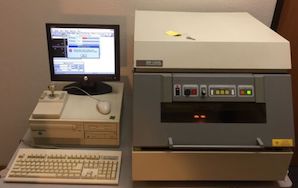
-----
What is the perfect instrument to measure exact micron tin plating over brass
Hi,
We produce Brass Components and sometimes we need Tin plating over our components, but our plater can not give us the perfect report on coating. When we go to the various labs to test the same,we found different microns from every lab report. Now we want to buy any handy instrument with which we can test exact micron thickness. Will you please suggest, anyone?
Thanks in advance,
Buyer - Jamnagar, India
March 22, 2008
Nilesh,
The most common method in reputable plating shops is the x-ray fluorescence, but the units are pricey. Beta backscatters are much more affordable, but the margin of error in thickness readings is higher than the x-ray fluorescence units. When sending parts to a lab, variations should be in microinches, not microns. I hope that was just a typo on your part. Good Luck to you.
Process Engineer - Syracuse, New York
A. Hi
For about $30K you can purchase a hand held XRF analyzer that can be operated right near your production line. As long as there is a flat area somewhere on your parts or the radius is not too tight this will work well. Tin plating over brass should give a nice XRF spectra. You can hold on to a couple of parts or test pieces where you know that the thickness is correct and you can compare your tin peak heights or areas to those test pieces.
thanks
Terry
- Auburn, Washington
A. Unless you are into nanotechnology, you do not need to measure to micron levels. As you no doubt know, metal deposition is not a precise science, you will get a thickness variation depending on where on the part you take your measurement; this is due to slight variations in local current densities and can be due to surface defects, current distribution effects, different anode-cathode distances etc etc. You need to decide what engineering tolerances you can accept and then decide if electroplating is the right process for your specification. Just to put things in perspective, a human hair is about 100 microns in diameter; you cannot see things at the micron level without using electron microscopy because you are getting towards the regions and realms of the wavelength of light (300-700nm).

Trevor Crichton
R&D practical scientist
Chesham, Bucks, UK
Q, A, or Comment on THIS thread -or- Start a NEW Thread
